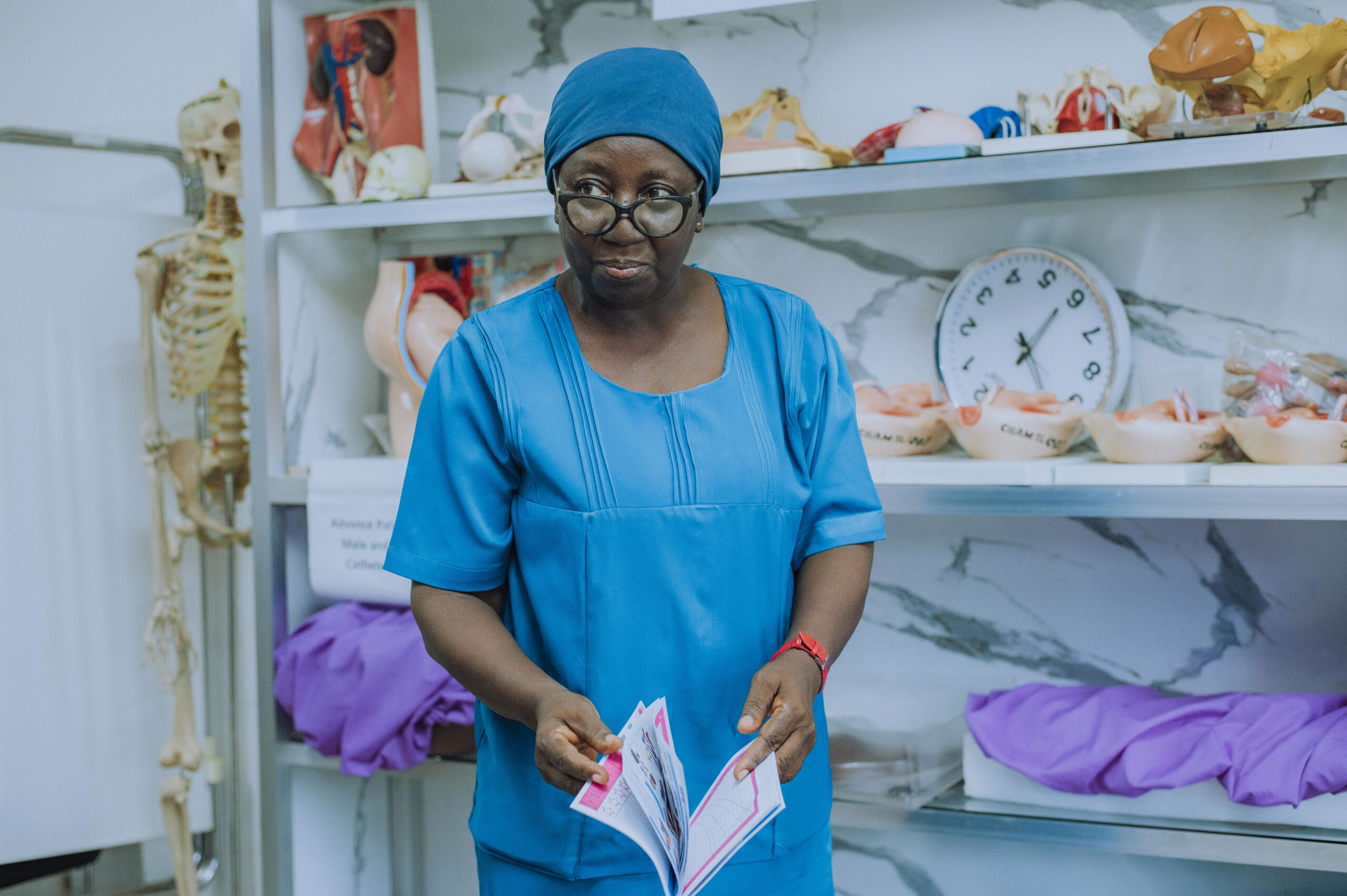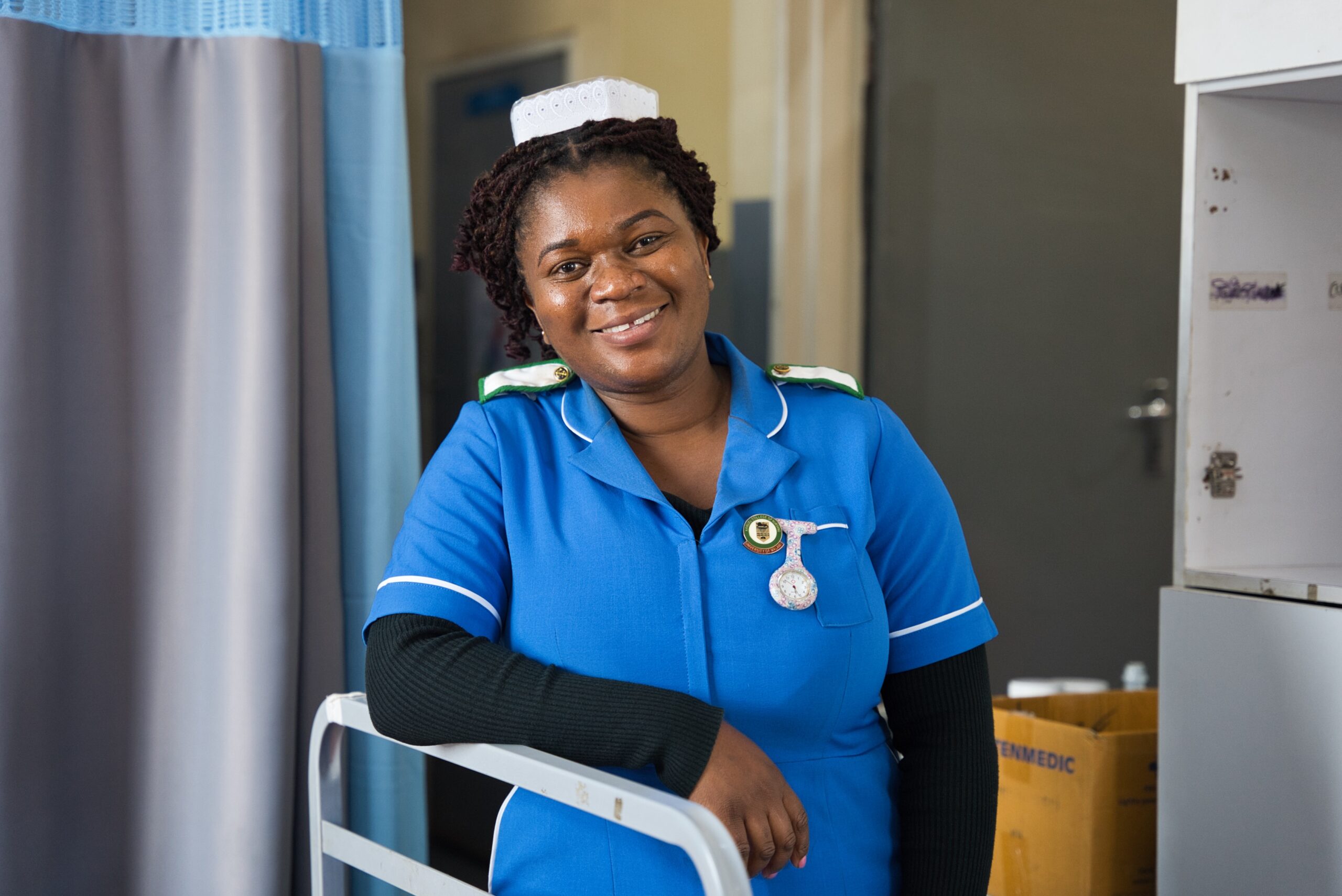She Can Only See My Eyes: Birth During COVID-19
She can only see my eyes.
I walk into her room in my pale-yellow gown, sterile white gloves, blue hair cover, an extremely tight-fitting white N95 mask, goggles, and a full plastic face shield.
In normal times, I casually walk into the room in my blue scrubs with my bright orange fleece over it to keep me warm. I smile, shake everyone’s hands, read the room, sit down on the edge of bed, gently lay a hand on the laboring mother, and take time to learn who they are.
Today, however, I am unrecognizable to my patient as she breathes hard and moans in labor. I have to remind myself that covered as I am, she can only see my eyes. I try to put myself in her position. I remember delivering my three sons and think of how different their births would be today.
I sense that she is nervous and fearful. No one wants to be in the hospital right now—only the very sick are here. Luckily, her partner, who is also masked, is beside her, firmly holding her hand. I say luckily because these days all visitors are banned from entering the hospital. Our hospital has successfully fought hard to keep one support person present for laboring women.
Here I am, standing alongside her in what looks like a space suit, trying to offer comfort through eye gestures and words that have to be shouted from behind my thick face mask and face shield in order to be heard. I apologize to her. I am not sure why I apologize. I have no control over the circumstances. I struggle to accept that this is the unfortunate reality of normal birth in the COVID-19 pandemic.
The situation becomes even more unsettling when the woman giving birth is suspected or known to have COVID-19.
A few weeks ago, our first obstetrical patient with COVID-19 arrived at the hospital in labor. The staff was nervous but prepared. We had developed comprehensive protocols and had enough personal protective equipment (PPE). We knew that infection with COVID-19 meant that the patient was at a higher risk for a variety of complications. Fortunately, the birth went well, and the mother delivered a healthy baby.
Immediately after cutting the umbilical cord, the team moved the baby to the corner of the room and placed it into an isolette, a special crib enclosed in clear plastic. As the CDC recommends, the baby would remain 6 feet away from the mother in that isolette for the entire hospital stay. The mother would be encouraged to pump and give breastmilk to the baby.
Pleased with their work, the team collectively exhaled. Only then, did the nurse notice that the mother was crying. Instinctively, while gowned in full PPE, she leaned in and hugged the mother who began crying harder and said, “Thank you. This is the first time I have felt like a human all day.”
We were so consumed with following the protocols, not getting infected, not exposing her baby to infection, and not transmitting infection out of the room to other patients that we all forgot about caring for the actual person.
A few days later, I took care of our next COVID-19 positive patient. Originally from Honduras, she lives with her father and sister, with limited external support systems. At baseline, immigrant and lower socioeconomic populations already account for a disproportionate amount of maternal and neonatal morbidity and mortality. Not surprisingly, without the luxury of being able to work from home or self-isolate within crowded multifamily apartments or homes, they represent a disproportionate amount of our COVID-19 cases.
Her family was already infected with the virus and sick at home. She had likely gone into COVID-19 induced preterm labor. She came alone and arrived by Uber. She had no other way to get to us. We instructed her to call when she arrived at the hospital parking garage. Gowned in full PPE, the nurse met her in the garage, gave her a mask, and escorted her to her labor room. I then entered the room in full PPE and grasped for my next steps.
I knew that she was COVID-19 positive. Her fear was evident. I was instructed to minimize my exposure, limit my time in the room, and try to stay 6 feet away from her. As much as my head told me to listen to these guidelines, I didn’t. I am a midwife and when someone is in pain and scared, I can’t distance myself. This is why I became a midwife. I am trained to handle most obstetrical issues that arise in pregnancy and labor, including complications such as pre-eclampsia and diabetes. I can offer women pain medication in labor if desired. I can even assist alongside surgeons in c-sections. However, if you ask most midwives why they decided to become a midwife, you will likely hear that they wanted to support women and their families through this amazing life experience of pregnancy and birth. Most of the time, this entails respecting this natural process, respecting the mother’s body and choices, and being a guide, counselor, and support system.
Praying my PPE would protect me, I touched her hand. Instantly, she smiled. I felt relieved. COVID-19 or not, I knew what to do. I rubbed her back. I talked with her. I apologized for my ridiculous space suit. She laughed. I encouraged her to get an epidural because she was alone and I couldn’t sit with her continuously. But when it came time for her to push and birth her baby, I sat inches away from her at the foot of her bed and waited calmly, with room lights dimmed, for her baby to be born. As I always do, I talked to the baby as it emerged. I said, “Welcome little one.” Heartbreakingly, because the mother was COVID-19 positive, she could not immediately hold the baby and provide skin to skin contact to assist with bonding, breastfeeding, and transition to life. However, I held the baby up so she could briefly see her beautiful daughter. She silently looked at her, and didn’t utter a word, as tears slowly rolled down her masked face revealing both the joy and sadness of that moment.
There has been a lot of news about COVID-19 flooding intensive care units, emergency rooms, and medical wards throughout the world, but its impact on labor and birth is also profound. Obstetrics is not an elective field where we can push care back to a safer time. Women are still giving birth every day, at all hours. We must figure out how to provide excellent and safe care for non-COVID-19 and COVID-19 positive women and their babies, all on the same unit.
There is little scientific data about COVID-19 to guide treatment and care in general. And there is even less known about COVID-19 in pregnancy. Too many times a day, I check my work email, the CDC website, and case study reports from around the world for updated insight, guidance, or protocols. I want more guidance but there are no concrete answers to be found. How easily will a mother pass COVID-19 to her child? What would that mean for a newborn? How can we mitigate an increase in postpartum depression during this time? How will babies who are born isolated from their mothers fare? And the biggest lingering, nagging question daily in my mind: Am I giving the best care to these women and their families at such a critical time?
I am trying. I come home exhausted after my 24-hour shifts. I enter into my garage, strip down, run into the shower, and then fall into bed. Sometimes I cry. Sometimes I lay there worried and sleepless, wondering if I have given good care, hoping I honored each woman’s experience in the face of fear and the unknown. I process with my husband, hug my children, and try to build resilience to face the next day.
Abraham Verghese, a doctor and writer, wrote, “In an emergency, what treatment can be given by ear? Words of comfort.” We are in the midst of an emergency, a global crisis. But I must remember, I am a midwife. I was before COVID-19 and I will be after COVID-19. And I know how to provide words of comfort. I can do that in full PPE, even with only my eyes showing.
*This post was originally published on Nurses Lead | Midwives Lead

